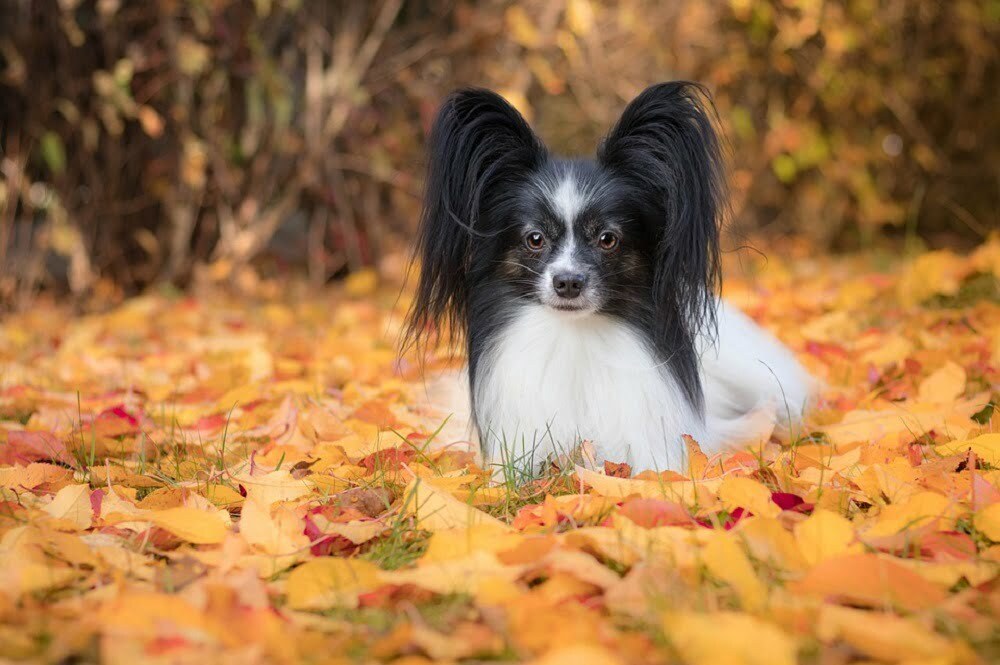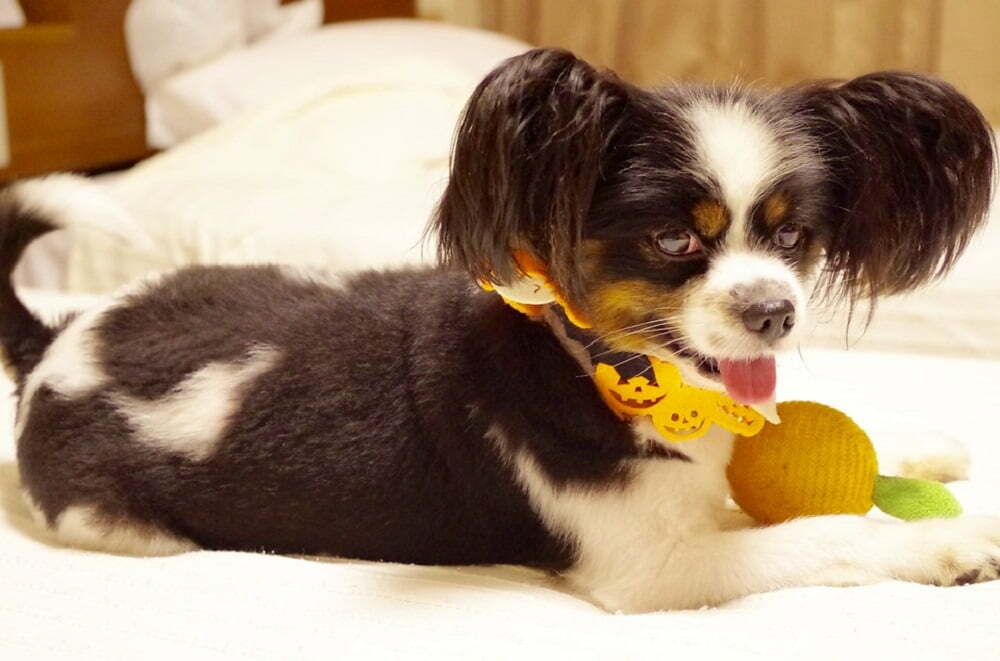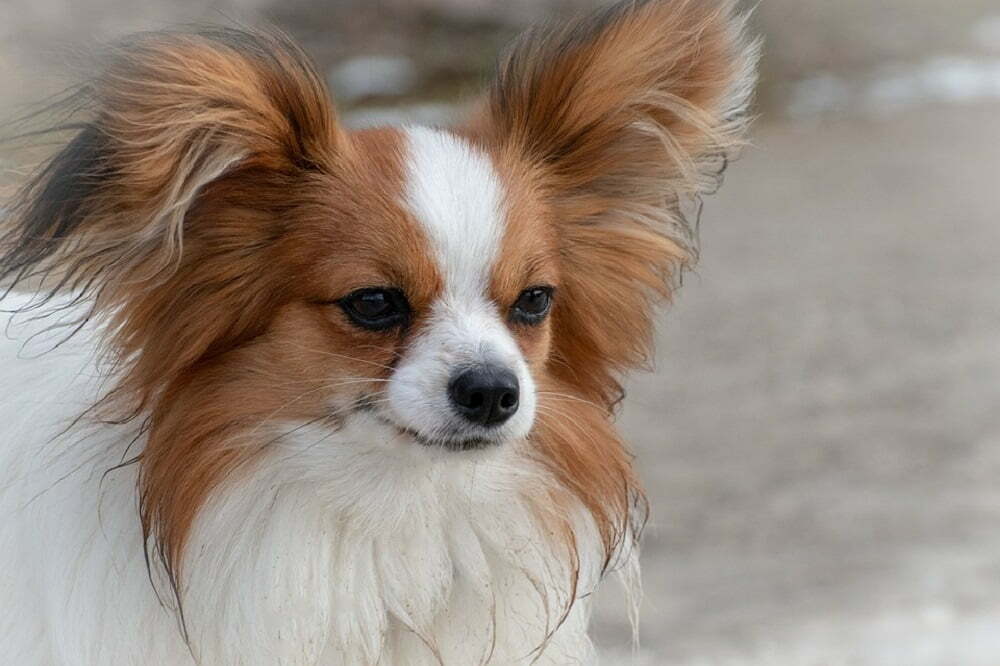If you’re considering introducing a new pet into your home, you probably have many questions. Which breed of dog should I choose? Is a dog right for me? It’s not an easy decision to make, and you’ll need to consider all the pros and cons of owning a dog.
So, what about Papillons? This dog is a toy breed, meaning it’s a small dog and will remain small for its whole life. Despite their small size, they’re super friendly and active, so it’s no wonder that the breed is becoming increasingly popular over the last few years. In fact, even Justin Bieber owns a little Papillon! So, are they suitable for you?
This guide will teach you everything you need to know about the Papillon breed, including how they should be trained, what they can do, their habits, vulnerabilities, and associated illnesses.
While Papillons can make excellent family pets, it is important to know that, like all breeds, they have a few characteristics that can make them less than-ideal pets in certain situations. So, before you rush into a hasty decision, let’s take a look at the Ultimate Guide to the Papillon Dog Breed.
What is a Papillon?

Papillons are known as joyful, sociable dogs who enjoy sitting in laps as much as they do racing around the home. They are active and energetic but not high-strung or neurotic, and they are easy to care for.
The Papillon dog breed is descended from the toy spaniels depicted in paintings by the Old Masters dating back to the 16th century. They are extremely active and excellent competitors in agility and obedience.
The shining personality of the breed makes these canines a favorite of all who encounter them. Even though you may think of Papillons as lap dogs, these pups are lively and playful and won’t just want to spend all day laying on the couch with you.
However, they enjoy the company of humans and will always attempt to be near their people. If you work long hours away from home, this is probably not the most suitable breed for you.
The Papillon originated in France and was named because of its distinctive ears. In French, Papillon means butterfly. Not all of them, however, have upright ears. The breed was originally known as a dwarf spaniel and dates back to the fourteenth century.
Papillons grew in popularity in Spain and Italy, where they were frequently represented in classic paintings. Those were drop-eared papillons; erect-eared papillons didn’t debut until the late 1800s. Famous owners include France’s King Louis XIV and Marie Antoinette.
Papillons were introduced to the United States in the late 1800s. The American Kennel Club (AKC) originally recognized the breed in 1915 and was officially represented by its own breed club in 1935. Lotoki Supernatural Being (Kirby), a papillon, earned Best in Show at the Westminster Kennel Club dog show in 1999. He also took first place in the World Dog Show and the Royal Invitational in Canada.
For centuries, the Papillon has been bred to be the ultimate companion. They are exceedingly people-oriented and expect to be there in their people’s lives at all times. This is the breed for you if you want a vibrant, energetic, outgoing, and gregarious friend. You and your Papillon will have a long and happy life together.
Physical traits of the Papillon dog breed
The Papillon’s distinguishing physical feature is its unusual butterfly ears, but its twin, the Phalene, is identical in every way except for the ears, which droop down.
They are registered and displayed as the same breed and born in the same litter. Keeping this in mind, all of the breed descriptors provided here apply to both the Papillon and the Phalene.
The Papillon belongs to the toy category. The Papillon is a small, fine-boned, delicate breed with an elegance that belies its frolicsome disposition. It stands less than a foot tall, with the average being 11 inches. It is taller than it is long, and its weight is proportional to its height. This breed should not be cobby or round but should have a light appearance.
It walks with a smooth, fast, and free gait, its ears stretched out like butterfly wings in flight. The ears of the Phalene are similar in form. However, they remain down even when moving. The tail is arched over the back with a broad, full plume.
The Papillon comes in any color, but the ideal design is a band of color across the nose that extends into the ears, emphasizing the butterfly appearance, or a flash of white on the face with the coloring of the ears. The coat is soft and straight, with little hair on the muzzle and skull but plenty on the ears, chest, and legs.
Personality traits of the Papillon dog breed
The Papillon is a very lively dog who enjoys playing and exercising. Despite its small size, this species is capable of roaming great distances and appears unconcerned about its physical limitations.
It may get into conflict with larger dogs, which it will not back down from, or when jumping from heights at which it is technically unable to jump. This placid dog is not prone to nervousness or shyness, unlike many toy breeds.
The Papillon, known for its intelligence, is one of the most sensitive and docile toy breeds. It’s also a lot of fun and gentle. Although this breed is generally an excellent choice for families with children, it must be supervised with young or active children because it can easily be injured during rough play or when trying to escape from the arms of a possessive child.
As long as it has been socialized from an early age, the Papillon is also sociable toward other dogs and animals. When introduced to strangers, this breed behaves marvelously.
Papillons also have a protective streak and will make its voice heard when strangers approach the house. They are excellent watchdogs, and some Paps are also excellent mousers in the house.
Health traits of the Papillon dog breed
Papillons are generally healthy, however, they, like all breeds, are prone to some health concerns. Although not all Papillons will develop any or all of these conditions, it is important to be aware of them if you are considering getting one.
If you want to buy a puppy, look for a trustworthy breeder who can show you health certificates for both of your puppy’s parents.
- Hypoglycemia
Hypoglycemia, or low blood sugar, is a risk factor for all toy breed puppies. Hypoglycemia is easily treatable in the early stages, but it can be fatal if not addressed.
It is critical that breeders and parents of toy breed puppies learn the signs and symptoms of this disorder because veterinarians sometimes misdiagnose it as viral hepatitis or encephalitis.
Hypoglycemia causes a puppy to slow down and become lethargic, followed by shaking or trembling. Put some honey on his tongue and take him to the vet immediately. If the situation is not corrected, he will eventually collapse, have convulsions, slip into a coma, and die.
It’s an emergency if your Papillon is limp and has grayish-blue gums and tongue. Toy puppies get hypoglycemia because they lack the fat reserves needed to deliver enough glucose during times of stress or when they do not eat consistently.
- Progressive Retinal Atrophy (PRA)
This degenerative eye disease leads to blindness due to the loss of photoreceptors in the back of the eye. Even before the dog shows any signs of blindness, PRA can be detected. Fortunately, dogs can adapt to blindness by using their other senses, and blind dogs can live happy and fulfilled lives.
Just don’t make it a habit to rearrange the furniture. Reputable breeders get their dogs’ eyes examined by a veterinary ophthalmologist on a yearly basis and do not breed dogs with this condition.
- Patellar Luxation
This is a common condition in toy dogs, also known as “slipped stifles.” It is caused when the patella, which is made up of three parts: the femur (thigh bone), patella (knee cap), and tibia (calf). This results in limb lameness or an irregular gait, similar to a skip or a hop.
It is a condition that exists from birth, but the physical misalignment or luxation does not always emerge until much later. Arthritis, a degenerative joint disease, can be caused by the friction caused by patellar luxation.
Patellar luxation is classified into four levels: grade I (occasional luxation causing brief lameness in the joint) to grade IV (severe tibial twisting and the patella cannot be mechanically straightened). This gives the dog the impression of having bowlegged legs. Patellar luxation of severe intensity may need surgical correction.
- Collapsed Trachea
It is unclear how this happens, but rapid intake of air flattens the trachea, making it difficult for air to enter the lungs, much like a soda straw being sucked on too vigorously. This condition is hereditary; it occurs in particular breeds, and dogs with it have an imbalance in the chemical makeup of their tracheal rings, causing the rings to lose rigidity and become unable to preserve their circular shape.
- Open Fontanel
Much like human babies, Papillons have a sensitive patch on the top of their heads from birth. Normally, the soft spot closes, much like a baby’s will, but occasionally one does not shut completely. An unintentional hit to that area of the head could be fatal to a Papillon with an unclosed soft spot.
How long does a Papillon live?

Papillons, like many tiny dogs, live a relatively long life. They have a life expectancy of 13 to 15 years. A Papillon’s health and exercise requirements must be met in order for them to live as long as feasible.
How to take care of a Papillon dog
- Exercise
Papillons make excellent inside pets due to their petite size, but that doesn’t mean they don’t require activity. They are lively, intelligent dogs who will want to play with their owners. They adore retrieving a little ball or toy indoors; a Papillon will quickly learn to bring it back so you may throw it again.
True to their spaniel lineage, Papillons will cheerfully gallop around the yard chasing squirrels, birds, and even insects. Papillons don’t understand how small they are, so owners must keep a close eye on them if they chase after a larger dog or even a cat.
Adults require two or three 20- to 30-minute walks or playtimes daily, and they will appreciate it even more if you provide them. Begin with two or three 10- to 15-minute walks per day, gradually increasing the time and distance. Whether they’re a puppy or an adult, they’ll let you know if they’re exhausted by stopping or sitting.
Although they will eventually grow up to be strong small dogs, Papillon puppies can be delicate. Falling off the back of the sofa or jumping off the bed can easily break a leg, so try to avoid such scenarios by training them to use steps to get on and off furniture or to wait until you take them down.
- Training
Papillons are intelligent and eager to please the humans with whom they have formed a bond. Certain tiny breeds take longer to housetrain than large ones, but Papillons make the process easier. Early socialization is critical, and obedience lessons are a great option.
Your Papillon will learn to obey you, and you will learn not to overindulge your darling companion. Remember that the Papillon is a companion dog at heart; if left alone for extended periods of time, they may become sad and acquire negative tendencies. Fortunately, a Papillon may form bonds with both other pets and humans.
If you keep them on a strict routine, Papillons are straightforward to housetrain. Take them out first thing in the morning, after every meal, after naps, after playing, after a grooming session or wash, and shortly before sleep.
When you are unable to monitor them, puppies should be created or kept in a puppy-proofed room.
- Grooming
The long, flowing coat of the Papillon is straight, delicate, and silky, with no undercoat. A ruffle of hair cascades down his chest. Although the coat is not prone to matting, it should be combed and brushed once or twice a week to disperse natural skin oils and keep the hair and skin healthy. Because the Papillon has no canine odor, bathe him only when necessary.
Nail trims should be done twice or three times a month or as needed. They’re too long if you can hear them clicking on the floor.
Small dogs are prone to periodontal disease. Thus, dental hygiene should begin as soon as possible. Brushing your Papillon’s teeth twice or three times each week, preferably daily, will help keep them clean and tartar-free.
The average price of a Papillon

If you intend to bring a Papillon Dog into your home, you will need to budget for many expenses. These include the puppy’s or dog’s purchase, vet bills, training costs, food, supplies, grooming, and other expenses.
A Papillon puppy will most likely cost between $500 and $1,900, with $1,000 being the typical price. The first year’s expenses are around $3,440, while subsequent years’ expenses will be approximately $1,015 (or $85/month). The average cost of owning a Papillon Dog is $17,650 throughout the course of the dog’s life.
Frequently Asked Questions
Are Papillons hypoallergenic dogs?
Every dog breed sheds some of its furs at some point. Hypoallergenic breeds do too. However, there is yet no truly hypoallergenic dog available. Papillons shed hair and are, therefore, not considered hypoallergenic.
When they lose hair, they also leave a few danders. People’s allergies may be aggravated by the danders. Paps, in general, make good companions and have fewer allergies.
Are Papillons safe around children?
Papillons have a cheerful and welcoming demeanor. This means they can thrive with both large and small humans. On the other hand, Papillon puppies are frail and should not be kept in houses with little children.
Are Papillons suitable for first-time owners?
Yes! They’re ideal for first-time dog owners because they’re incredibly bright and thus quite simple to train. However, be warned: training must begin early and be compassionate yet firm. Papillons must understand their place in the ‘pack’ structure, or they may try to take over as the alpha! They are also prone to yapping, which must be stopped from a young age.
